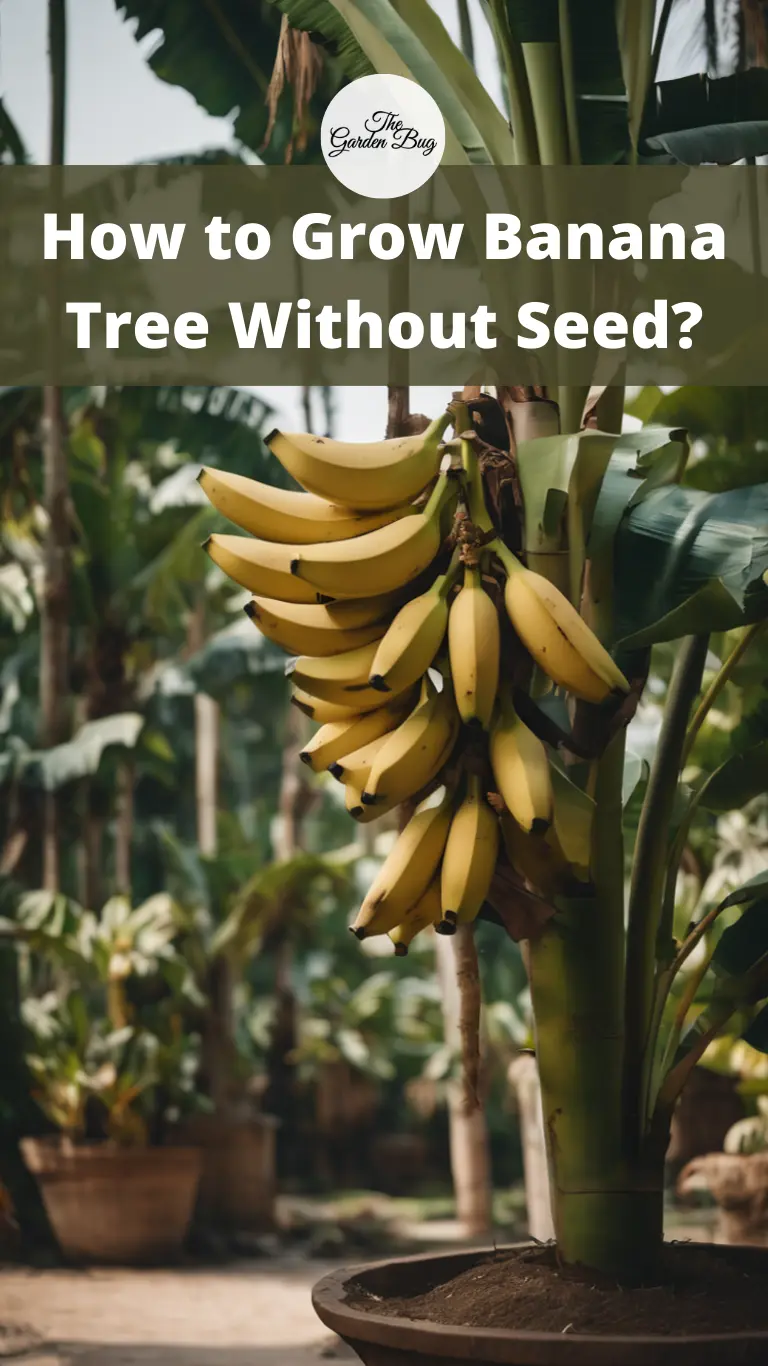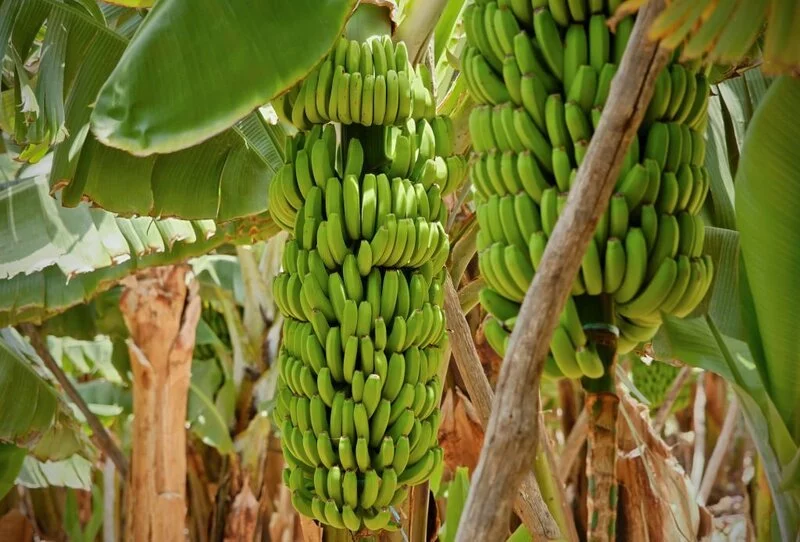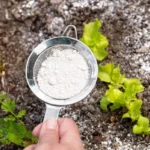Bananas! They’re not just a tasty fruit, but a fascinating plant. While we often find seeds inside most fruits, it’s quite intriguing that our supermarket bananas don’t have any visible seeds.
Have you ever wondered why? It’s because most commercial banana plants are grown without seeds. Yes, you heard that right – banana trees can be grown without a single seed! It sounds like magic, but it’s really a combination of nature’s wonders and a bit of gardening skill.
By learning this method, you can enjoy your very own home-grown bananas, turning your garden into a tropical paradise.
Let’s peel back the layers and dive into the world of seedless banana cultivation.
- This auction is for one (1) Musa ‘Basjoo’ Banana tree. This fantastic banana is known for its ability to be grown in all 50 states. It has quickly gained popularity due to its rapid growth and ease of care. Cold hardy in zones 3-7, the Basjoo will give you that tropical look no matter where you live.
- Plant in full sun to part shade, ideal conditions will grow 12-18′ in height. Provide plenty of water throughout the growing season. In colder climates, mulch heavily at plant base to protect to -20°F. Mature height of 12-18′.
Basics of Banana Plant Propagation
Before we start our banana growing journey, it’s crucial to understand that bananas reproduce differently from many other fruit trees. There are mainly two methods: seeding and vegetative propagation.
- Seeding: This is a more traditional way of growing plants, where seeds are planted in soil, nurtured, and eventually grow into new plants. But guess what? Banana trees we commonly see don’t produce functional seeds! So, how do these plants reproduce?
- Vegetative Propagation: Here’s the secret! Banana plants can create clones of themselves. They produce little baby plants, known as “suckers” or “pups”, which grow near the base of the parent plant. These are genetic copies of the parent and can be separated and planted to grow into a new banana tree. Isn’t that amazing?
For our banana growing guide, we’ll be focusing on vegetative propagation. So, get ready to go bananas over your new tropical gardening project! We’re about to transform you into a bona fide banana farmer. The joy of harvesting your own bananas awaits.
What You Will Need
Now that we’re set to embark on our tropical gardening adventure, let’s gather the tools we need to grow our own banana trees. Don’t worry – it’s not as complex as you might think!
- A Healthy Banana Plant: First things first, we need a parent banana plant. This plant should be strong and healthy because it will be donating one of its suckers to us.
- Sharp, Clean Cutting Tools: A clean, sharp knife or garden clippers is essential. This is what we will use to separate the sucker from the parent plant. Always remember, cleanliness is key to preventing disease spread.
- Garden Gloves: These will keep your hands clean and protected. Gardening can be a messy business, after all!
- Potting Soil and Compost: A combination of good quality potting soil and compost provides the best environment for the baby banana plant to grow.
- Large Pot or Garden Space: Finally, you’ll need a space for the new banana plant to grow. This can be a large pot or a sunny spot in your garden. Remember, bananas love sunlight and space!
Step-by-Step Guide to Growing Banana Trees Without Seeds
With tools in hand, it’s time to get our hands dirty! Follow these steps to start your journey towards becoming a proud banana tree owner.
- Choose a Healthy Parent Plant: Look for a strong, mature banana plant. It should have one or more suckers growing near its base.
- Remove a Sucker: With your gloves on, use your sharp, clean tool to cut a sucker away from the parent plant. Be gentle and try to get some roots with it.
- Prepare the Sucker: Trim the leaves, leaving just a few at the top. This helps the plant focus its energy on growing roots.
- Plant the Sucker: Dig a hole in your pot or garden space, place the sucker in, and then fill the hole with your potting soil and compost mix.
- Water and Care: Water the newly planted sucker well. From here on, you’ll need to provide consistent care, which includes regular watering, ensuring plenty of sunlight, and monitoring for any signs of pests or disease.
And voila! You’ve just planted a banana tree without a seed. Over the coming months, with patience, care, and a dash of your newly minted green thumb, your baby banana plant will start to grow. Soon, you’ll be gazing at a thriving banana tree and, eventually, harvesting your own bananas.
The Growth Process
Now that you’ve planted your banana tree, what’s next? Well, brace yourself for an exciting journey as you watch your little plant sprout into a full-grown banana tree.
During the initial stage, ensure your baby banana plant is getting plenty of sunlight and water. Don’t forget to add compost periodically for that extra nutrient boost.
With proper care, you’ll see it grow taller and stronger over the weeks. Banana plants love warmth, so ensure it’s placed in a sunny spot. Generally, it takes about 9-12 months for the plant to mature and start producing fruit. So, patience is key here!
Harvesting Your Bananas
Harvesting bananas is an exciting reward after months of patience and care. But how do you know when they’re ready to pick? When the little flowers at the end of the bananas dry up and fall off, and the bananas start to turn slightly yellow, that’s your cue. Gently cut the whole bunch off with a sharp knife, leaving the tree to focus energy on new shoots.
Store your harvested bananas at room temperature and watch them ripen to perfection, or share them with your neighbors and enjoy the fruits of your labor together!
FAQs
Can you grow a banana tree indoors?
Yes, with enough light and space, banana trees can be grown indoors.
How long does it take for a banana tree to bear fruit?
Typically, it takes 9-12 months for a banana tree to bear fruit.
Do banana trees die after bearing fruit?
Yes, the original banana plant dies after fruiting but leaves behind new suckers that can grow into new plants.
Conclusion
Growing a banana tree without seeds might sound daunting at first, but with patience, care, and a little guidance, you’ve seen that it’s very possible – even in your own backyard. This journey not only brings the joy of gardening but the satisfaction of harvesting your own bananas. So, why wait? Start your tropical gardening adventure today and soon, you might just be enjoying a delicious banana, grown from your own two hands.







